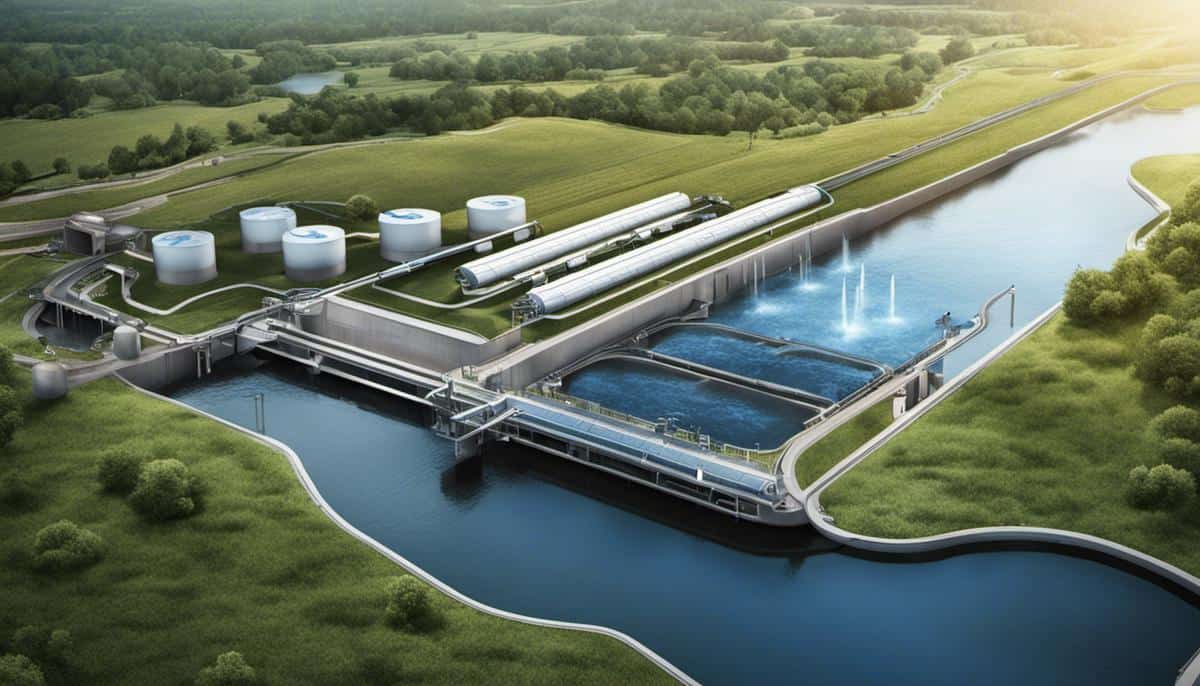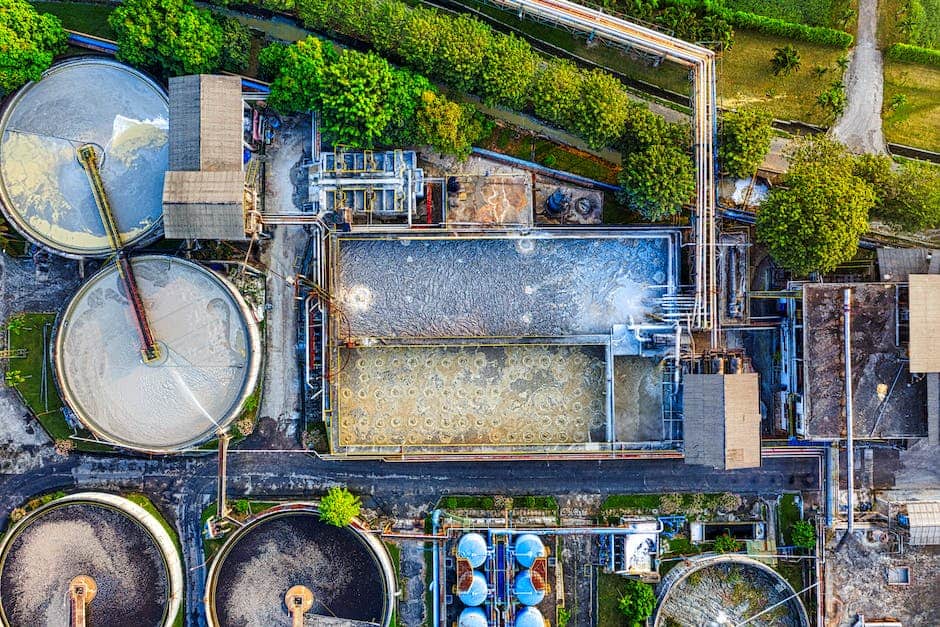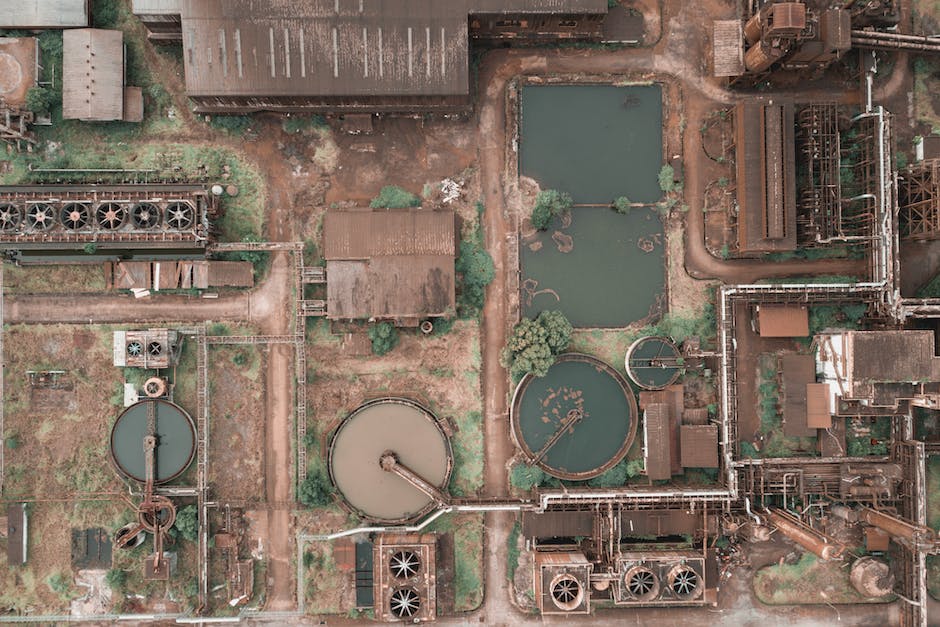
30 Oct WasteWater Treatment Regulations for Businesses: A Comprehensive Study
Water is a pivotal component of life, but the world today grapples with a significant challenge that has implications for both public health and our planet’s wellbeing – wastewater. Originating from various sources, a considerable contribution to its production can be attributed directly to commercial businesses. As the world leans in to enforce sustainable practices, understanding the concept and consequences of wastewater and the importance of its proper treatment have become more critical than ever. In light of the corresponding regulations, this exploration focuses on federal standards set by the Environmental Protection Agency (EPA), differing state-specific laws, and the best practices for efficient wastewater management. It also provides a glance into potential future trends in this regulatory landscape, preparing businesses for what lies ahead.
Understanding Wastewater
Observing the intricate network of society’s physical systems illuminates a complex ballet of interactions and dependencies, some of which are overt and visible, while many are covert and unnoticed. Among these essential yet under-discussed systems is wastewater management, a field that profoundly influences many facets of our world, from environmental health to commercial enterprise. It is indeed a process wherein lies the intersection of science and enterprise.
The term ‘wastewater’ refers to any water that has been adversely affected in quality by anthropogenic influences. This includes water from domestic, commercial, or industrial establishments, and may contain a myriad of impurities such as chemicals, bacteria, oils, and solids. Wastewater, in its categorization, rightly encompasses storm overflow, urban runoff, agricultural, domestic and industrial waste.
Wastewater treatment plays a pivotal role in our societal and business ecosystem. Without it, the environment and public health could be at severe risk from the release of harmful substances and pathogens. But the impact and significance of wastewater treatment majorly extend beyond environmental protection and public health, reaching into the realm of commercial operations, where diligent wastewater management helps mitigate a plethora of potential problems.
In the commercial sector, managing wastewater is crucial, predominantly for three major reasons: compliance to regulations, cost savings, and corporate social responsibility.
- Companies that fail to meet wastewater regulations can face substantial financial penalties that majorly impact profitability. Regulatory bodies like the Environmental Protection Agency (EPA) in the United States have stringent standards for wastewater disposal, with a paramount emphasis on protecting both the environment and the public from potentially harmful contaminants. These rules vary based on the industry and locality, underscoring the complex landscape of wastewater management.
- Additionally, developing and maintaining effective wastewater treatment methods can lead to significant cost savings for businesses. Cutting-edge technologies like anaerobic digestion and reverse osmosis not only efficiently clean wastewater to regulatory requirements, but can also recover resources – think reclaimed water, energy, or even nutrients. This resource recovery has promising implications for operational efficiency and bottom-line results.
- A thoughtful approach to wastewater treatment can also bolster a company’s standing in terms of corporate social responsibility. Consumers are increasingly demanding that companies assume responsibility for their environmental impact, insinuating that proper wastewater management is not just an operational necessity, but a strategic advantage in the competitive commercial landscape.
Casting light on the interrelationship between wastewater management and commercial enterprise underscores the depth and breadth of implications this intricate field holds. As businesses steer towards sustainable practices, wastewater treatment proves to be more than just a back-end process. Instead, it reveals itself as a strategic asset that intertwines environmental stewardship, regulatory compliance, and commercial viability. Far from being an unsavory topic confined to the outskirts of academic investigation, wastewater management emerges as a keystone in our societal and commercial operations, moving in synchrony with scientific advancements, economic realities, and ecological imperatives.

Federal Standards for Wastewater Treatment
Federal Regulations and Business Wastewater Treatment: An Inextricable Nexus
Delving into the labyrinth of federal regulations that govern the treatment of wastewater in US businesses unveils a formidable matrix of legislations primarily designed to safeguard public health and the environment. Examined critically, the Clean Water Act (CWA) and the National Pollutant Discharge Elimination System (NPDES) form the bedrock of wastewater regulations in the United States, stipulating meticulous compliance for businesses.
The Clean Water Act, enacted in 1972, essentially aims to restrict the discharge of pollutants into US waters. This magisterial law established the groundwork for regulating discharges of pollutants and also funded the construction of sewage treatment plants. Businesses across the spectrum must grapple with the rigorous standards stipulated by the CWA to ensure that any wastewater discharged won’t deleteriously impact water quality.
The indomitable CWA is bolstered by the NPDES program, which is set forth by the US Environmental Protection Agency (EPA). The NPDES program further promulgates categorical industry-specific guidelines for New Source Performance Standards (NSPS) and Pretreatment Standards. NSPS delineates controls to prevent new businesses or expanding existing businesses from contributing to pollution. Conversely, Pretreatment Standards are designed to prevent businesses from discharging toxins that can potentially inhibit the operating efficacy and capacities of publicly owned municipal treatment plants.
Amidst this regulatory milieu, businesses must also heed the Resource Conservation and Recovery Act (RCRA), which mandates strict controls over the treatment, storage, and disposal of hazardous wastes. Interestingly, certain industrial wastewaters, such as those from the petroleum and coal products manufacturing industry, are encompassed within the RCRA purview.
The regulations are not without their nuances. For smaller businesses such as restaurants that generate their own unique form of wastewater—grease, known in regulatory parlance as Fats, Oils, and Grease (FOG)—specific local ordinances may also apply. These local FOG programs exist to prevent excessive FOG from blocking sewer lines, a common and costly issue for municipal treatment facilities.
From a broader perspective, effective treatment and disposal of wastewater illustrate the power of collective action in protecting the environment and public health, showcasing the symbiotic relationship between government regulations and commercial enterprises. Ultimately, these regulations serve not only as a protective bulwark but also as a beacon guiding businesses towards responsible ecology and stewardship on their quest for commercial success.

State-Specific Wastewater Regulations
Given the comprehensive discourse on the broad aspects of wastewater management, let us now delve into the specificities pivoted around the dynamics of state regulations for the treatment of wastewater. Although there exists an overarching federal framework, implicit variations within state regulations further underscore the complexity of this topic.
According to the U.S. Environmental Protection Agency (EPA), wastewater regulations at both the federal and state level are principally derived from the Clean Water Act (CWA). However, it is crucial to recognize that states may implement more stringent standards in accordance with local environmental and public health exigencies.
For instance, the environmental regulations in California, known for its strict environmental controls, often surpass the federal requirements. The California State Water Resources Control Board ensures advanced treatment of wastewater to effectively mitigate contaminants before discharging into the environment, impacting various sectors such as agribusinesses and industries with high water footprints.
Contrastingly, the Texas Commission on Environmental Quality, vested with the power of regulatory decision-making in Texas, adopts regulations closely aligning with the federal standards rather than imposing additional constraints.
Additionally, the EPA’s National Pollutant Discharge Elimination System (NPDES) delegates the authority to states to issue permits for wastewater discharge, subject to EPA approval. But states like Idaho and New Mexico, as of recently, do not administer their NPDES programs, leaving the responsibility entirely to EPA.
Moreover, the complexities of New Source Performance Standards (NSPS) and Pre-treatment Standards can also be interpreted differently among states. These regulations often aim at reducing pollutants from new sources and pre-treating industrial wastewater before being discharged into a municipal wastewater treatment plant.
Implicating this further, states can devise incumbency on industry-specific wastewater treatment operations as well. One such example is Florida’s strict regulations for the Dairy industry, prioritizing nutrient management plans to hinder nutrient pollution.
Navigating through the intricacies of varying state regulations, unique ecological contexts necessitate local ordinances. An apt illustration is the control of Fats, Oils, and Grease (FOG), serving as a cardinal concern for the municipalities. To mitigate sewage blockages and environmental impact, cities have installed specific FOG ordinances, such as FOG Control Program by the city of Austin, Texas.
Evidently, the pivotal importance of responsible ecology and stewardship cannot be overstated. A fruitful intersection between government regulations and commercial enterprises can indeed cultivate sustainable business practices. Akin to a ripple effect, state-specific regulations play a prominent role in guiding this symbiosis, showcasing the profound impact on effective wastewater management.
It is necessary to delineate state regulation nuances to foster notable progress in wastewater management. Ultimately, the intertwining of these varied components weave a tightly knit, complex fabric of regulatory infrastructure that underpins the future of wastewater treatment in the United States. Hence, understanding these disparities can optimistically aid in manifesting an equitable ecology, thriving economic ventures, and innovative scientific breakthroughs.
Best Practices for Wastewater Treatment
Shifting towards a more solution-centered discussion, there are several recommended strategies for optimal wastewater treatment in commercial businesses. These strategies, when diligently adhered to, have the potential to not only conserve the natural environment, but also contribute towards long-term business sustainability.
First in line, the implementation of best management practices (BMPs) for industrial wastewater treatment is highly recommended. BMPs essentially provide operational guidelines that businesses can adopt to minimize the impact of their waste outputs on the environment. These practices encompass preventive measures such as spill prevention plans, secondary containment structures, and standard operating procedures for handling waste streams. The goal is to minimize potential pollution sources from the outset, thus reducing the burden on wastewater treatment processes.
Additional to preventative BMPs, progressive facilities often instate internal programs for continuous improvement tracking. Actionable metrics such as reduction of water usage, wastewater volume, and pollutant concentrations over time underscore the effectiveness of the plant’s treatment approach. Regular assessments, process audits, and performance monitoring against these criteria facilitate a cycle of constant refinement and improvement.
A more innovative strategy involves embracing technologically advanced wastewater treatment systems. These could include technologies like advanced oxidation processes (AOP), sequencing batch reactors (SBR), membrane bioreactors (MBR), and reverse osmosis. Adopting such sophisticated systems offers greater treatment efficiencies, smaller physical footprints, and aids in significantly reducing the hardness levels of wastewater, thus meeting stringent regulations for commercial effluent discharge.
In certain industries, there might be the scope to extract value from wastewater. Rather than seeing wastewater as an unwanted byproduct, businesses can perceive it as a potential resource. Resource recovery methods may involve extracting valuable components such as raw materials, energy, or nutrients from wastewater. For example, brewing industries could utilize wastewater for biogas production, while agriculture-focused industries might recover nutrients for use in crop cultivation.
Finally, investing in employee training programs is an overlooked but critical strategy. Employees need to understand the importance of their role in managing wastewater – from preventing spills to monitoring treatment processes. Having a team that’s knowledgeable about BMPs, equipment operation, and emergency response enables the effective prevention of problematic wastewater situations, contributing to the overall success of the facility’s treatment strategy.
In conclusion, a holistic approach involving best management practices, progressive improvement tracking, adoption of advanced technologies, resource recovery methods, and comprehensive employee training programs make up the quintessential wastewater treatment strategy for commercial businesses. Individual implementation of these strategies may vary, based on industry specifics and regulatory mandates, thus necessitating businesses to develop a plan uniquely tailored to their treatment needs. Leveraging these strategies places businesses on the advantageous path of environmental stewardship while preserving their ability to maintain a thriving, sustainable operation. Such is the power and indispensability of responsible wastewater treatment.

The Future of Wastewater Regulations
As we gaze into the murky depths of the future, we can see shifts in the regulatory landscape that will require businesses to adapt and transform their wastewater management strategies. One can envision watershed changes like the introduction of advanced wastewater treatment techniques, shifting regulatory requirements, increasingly stringent standards, and the urgent need for climate adaptation. Thus, the need for proactive measures has never been more pressing.
An expected transformation stems from the increasing urgency of climate change and the resultant need for adaptation. Wastewater facilities are substantial contributors to annual methane emissions, spurred by biological degradation processes. As climate legislation continues to evolve, significant reductions in greenhouse gas emissions from wastewater treatment facilities will be inevitably targeted. Businesses thus must develop strategies that incorporate sustainable wastewater treatment practices capable of mitigating these emissions.
Moreover, with the escalating negative impacts of emerging contaminants like pharmaceuticals, personal care products, pesticides, and other organic chemicals, we can anticipate the tightening of existing regulatory controls. Currently, many such commons contaminants escape conventional wastewater treatment processes, ending up in natural water bodies with dire ecological consequences. It is reasonable to foresee the establishment of new wastewater regulations targeting these pollutants, urging businesses to adopt innovative and effective technologies for their removal.
In keeping with the circular economy’s principle, we can expect regulations to focus on the extraction and utilization of resources embedded in wastewater. Numerous untapped resources such as nutrients, energy, and precious metals reside in wastewater streams. Forward-thinking companies are already harnessing these ‘waste to wealth’ opportunities. Hence, future regulations might encourage, or even demand businesses to transition from a linear disposal mentality to a circular resource recovery model.
In anticipation of these transformational changes in wastewater regulations, businesses can take multiple steps to prepare. First, it is vital to stay informed on emerging contaminants and rapidly advancing wastewater treatment technologies. Scientific journals, seminars, and workshops provide an array of information to stay abreast of these developments.
Second, investing in research and development can yield significant dividends. Adidas, for instance, has been utilizing waterless dye technology, thereby eliminating a major source of water pollution in textile manufacturing. More research will unearth such transformative techniques and technologies.
Finally, one cannot downplay the importance of stakeholder engagement in wastewater management. Dialogues with regulatory authorities, local communities, and industry peers can facilitate understanding of the expectations and concerns that guide future regulations. Through such engagement, businesses can proactively adjust their strategies in anticipation of changing requirements.
In conclusion, businesses that appreciate the shifting sands of a regulatory landscape will be well-positioned not only to respond to, but also drive innovations in wastewater management. A transformational shift in mindset from treating wastewater as a disposable waste to a potential resource will be vital in this journey. In the realm of wastewater management, the future belongs to those who take the initiative today. The ripples of anticipation are spreading; businesses must equip themselves with the right strategies to leverage the waves of change.

The regulations governing wastewater treatment are subject to change, reflecting advances in technology, the state of scientific understanding, and shifting priorities in environmental protection. While challenges undoubtedly exist in compliance, especially when it comes to state-specific differences, they are outweighed by the environmental conservation benefits. Looking ahead, commercial businesses must stay abreast with the evolving trends and considerations in wastewater management regulations. Taking proactive steps towards implementing best practices and gearing up for possible changes will not only fulfill their responsibility towards the environment, but also provide a substantial foundation for sustainable operations. From understanding its inception to witnessing its future transformation, navigating the course of wastewater offers a crucial perspective on one of society’s most pressing environmental challenges.




Sorry, the comment form is closed at this time.